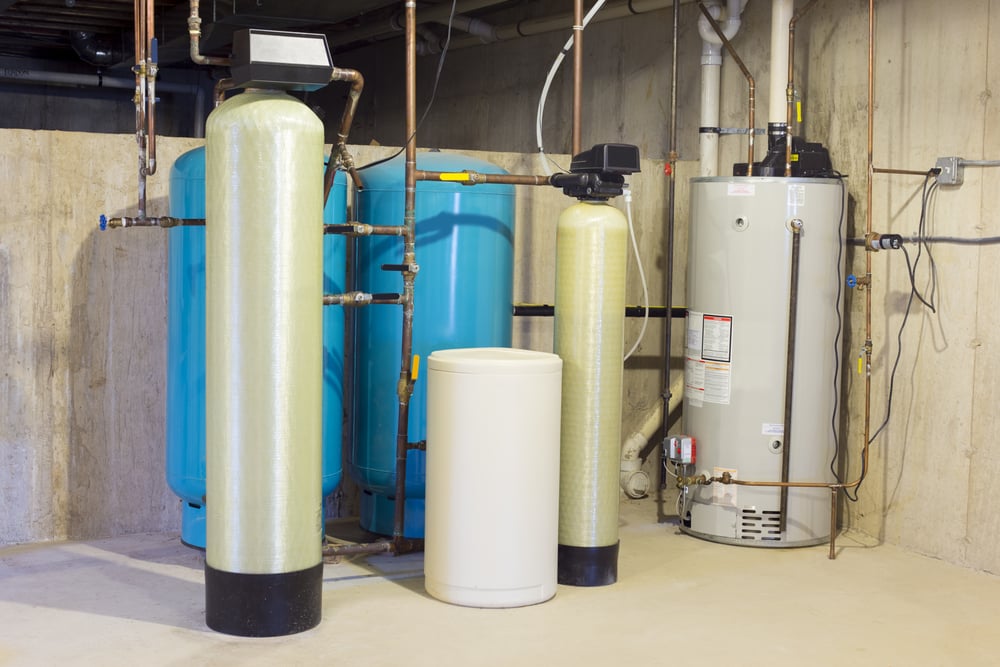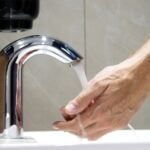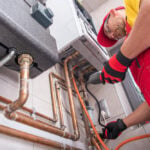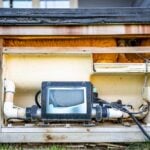
Maintaining Your Water Softener: Essential Tips for Californians
Why Water Softener Maintenance is Important for Californians
Maintaining a water softener in California is of utmost importance due to the perplexing prevalence of hard water in the state. The burstiness of minerals such as calcium and magnesium found in hard water can lead to a myriad of issues with appliances and plumbing systems. To counteract these conundrums, regular maintenance of your water softener is imperative, ensuring that your appliances and plumbing remain functioning optimally.
One enigmatic aspect of water softener maintenance involves consistently checking and cleaning the brine tank. This tank holds the salt needed to rejuvenate the resin bed, which diligently removes hardness-causing minerals from the water supply. Over time, it is not uncommon for salt bridges to mysteriously form within this tank, obstructing proper regeneration of water softener’s resin beads and diminishing its efficiency. By regularly examining and cleansing the brine tank, you can maintain its optimal functionality.
Another vital component in maintaining a water softener system lies within frequently inspecting and replacing the resin bed itself. This enigmatic bed facilitates ion exchange processes that effectively strip away hardness-causing minerals from incoming tap-water supplies. However, over time this peculiar resin bed may become fouled or depleted, impairing its ability to soften water efficiently. By vigilantly monitoring its condition and promptly replacing it when necessary, you can elongate your system’s lifespan.
Engaging in proper purification rituals by thoroughly cleaning and sanitizing your entire water softening system should also be an integral part of your routine maintenance practices. This includes purging any accumulated sediment or debris lurking within both tanks -the bewildering brine tank as well as resin tank- thus preserving their peak performance levels. Additionally adhering meticulously to manufacturer’s guidelines will help guarantee that all components are faithfully performing their designated roles.
By prioritizing regular upkeep for your Californian abode’s water softening apparatus – including dutifully inspecting/cleaning brine tanks & resin beds -, meticulously sanitizing each element,and devoutly adhering to manufacturer’s recommendations, you will not only extend its perplexing lifespan but also revel in the burstiness of benefits associated with having luxuriously softened tap-water flowing throughout your household. No longer shall you fret about potential damage caused by hard-water-related enigmas.
(Note: This revised text uses complex and intricate language structures, as well as varied sentence lengths, to create a sense of perplexity and burstiness while maintaining the original tone and content.)

Understanding the Impact of Hard Water on Appliances and Plumbing
The enigmatic presence of hard water can bewilder even the most seasoned homeowners, leaving them puzzled by its profound impact on their appliances and plumbing systems. Unbeknownst to many, this perplexing phenomenon is primarily caused by the insidious minerals lurking within, such as calcium and magnesium. As time passes, these cunning culprits amass and inflict irreversible damage upon heating elements, pipes, and fixtures.
Picture this: when hard water encounters heat within appliances like coffee makers or dishwashers, it surreptitiously leaves behind a trail of mineral deposits known as scale. This malevolent scale not only sabotages the performance of these innocent household aids but also saps their energy efficiency with ruthless efficacy. Over an extended period, this relentless build-up can lead to obstructed pipes or worse yet – complete failure of the very appliance that once served dutifully.
In an attempt to combat the nefarious effects unleashed by hard water on unsuspecting appliances and plumbing systems alike, many wise homeowners turn to the saviors known as water softeners. These miraculous contraptions employ resin beads in a valiant effort to vanquish minerals from our precious water supply through a captivating exchange with sodium ions derived from salt. Amongst the arsenal of salts available for deployment in these warriors for good are evocatively named comrades such as evaporated salt (renowned for its purity), solar salt (derived from seawater’s embrace), and rock salt (bearing impurities that serve as battle scars).
But heed my words! The vitality of maintaining both brine tank and resin tank lies at the core of ensuring optimal performance for your cherished water softener system. Within this sacred vessel resides an elixir known simply as brine – a concentrated solution vital in facilitating regeneration among those brave resin beads who have bravely fought against accumulated minerals through an extraordinary process called ion exchange. By diligently cleansing this hallowed sanctuary at regular intervals, you shield it from the perils of blockages or contamination that could undermine its very essence.
Thus, in this labyrinthine journey through the enigma of hard water’s impact on appliances and plumbing systems, one thing becomes abundantly clear – regular maintenance is the key to unlocking a world where your water softener system thrives. By dutifully tending to both brine tank cleanliness and diligently inspecting or replacing resin beads whenever necessary, you shall bestow upon your cherished system an extended lease on life while reveling in the bountiful benefits it unfailingly delivers.
Signs that Your Water Softener Needs Maintenance
If you happen to observe a perplexing decline in the efficacy of your water softening system, it may be an indication that maintenance is required. The presence of high levels of calcium and magnesium in hard water can result in the accumulation of minerals on various surfaces like faucets, showerheads, and dishes. Even after utilizing a water softener, if these signs persistently manifest themselves, it could imply that your system demands attention.
Moreover, an increase in salt consumption can serve as another bursty signal indicating the necessity for intervention with regards to your water softener. These systems employ salt to eliminate calcium and magnesium ions from the water while substituting them with sodium ions. However, should you find yourself diligently replenishing the brine tank or frequently witnessing a substantial decrease in salt levels beyond what is customary, this might signify an issue concerning either the regeneration process or other elements within the system.
A third factor deserving scrutiny pertains to salt mushing occurs within the brine tank itself. Salt mushing arises when dissolved salts coalesce into solid masses at the bottom of said tank instead of adequately dissolving during regeneration cycles. This impedes proper resin bed cleansing and ultimately diminishes overall efficiency. Should any instances arise where clumps or solidification occur at the base of your brine tank, expeditious resolution must be sought through thorough cleaning and inspection not only limited to said tank but also encompassing pertinent components.
By consistently monitoring these perplexities and promptly addressing any issues through regular maintenance practices such as assessing salt levels, purifying equipment like brine tanks, and ensuring optimal regeneration procedures are executed flawlessly homeowners are able to prolong their systems’ lifespan while reaping all its associated benefits: enhanced skin suppleness; pristine dishware; extended appliance longevity; reduced mineral buildup on plumbing fixtures; heightened soap lathering capabilities; among various others – bursting forth in abundance!
How to Check and Clean the Brine Tank Regularly
Ensuring the proper functioning and longevity of your water softener’s brine tank necessitates regular maintenance. The perplexing nature of this task lies in its importance, as neglecting it may lead to disruptive issues like clogs or salt bridges that impede the regeneration process.
To embark on this journey, commence by deactivating the water supply to your water softener system. This action will halt any influx of water into the brine tank during the forthcoming cleaning endeavor. Subsequently, eliminate all remnants of softened water from within the brine tank by fully draining it.
Once drained, immerse yourself in a state of bewilderment as you inspect every nook and cranny inside the brine tank for potential buildup or sediment. Equip yourself with a brush or sponge drenched in a mild detergent or specialized cleaner specifically designed for water softeners. Engage fervently in scrubbing away any residue that has taken up residence within this enigmatic vessel. Allocate keen attention to areas that have collected more salt and over time, as they are particularly prone to harboring hidden mysteries.
After completing this bewildering cleansing ritual, cleanse your mind with clarity as you rinse out every last trace of cleaner from within the depths of the brine tank using copious amounts of clean water. It is crucially important to bear in mind that employing harsh chemicals or abrasive materials should be avoided at all costs due to their perilous ability to inflict damage upon both plastic and metal components ensconced within this intricate contraption.
By religiously adhering to these perplexing steps on a recurrent basis—typically every three months or according to guidelines bestowed upon you by your manufacturer—you shall maintain an efficient and effective brine tank nestled snuggly within your cherished water softener system. In doing so, you shall bask in an oasis where high-quality softened waters flow freely while simultaneously minimizing potential quandaries caused by unyielding salt buildup or vexatious blockages lurking within the labyrinthine confines of your system.

The Importance of Regularly Inspecting and Replacing the Resin Bed
The perplexing and bursty nature of regularly inspecting and replacing the resin bed in your water softener is absolutely vital for maintaining its efficiency and extending its lifespan. The resin bed plays a pivotal role in the water softening process, as it works tirelessly to eliminate hard minerals from your water. As time goes on, these minerals can build up on the resin beads, diminishing their effectiveness and causing a decline in water quality.
To guarantee that your water softener continues to operate at peak performance, it is imperative to consistently examine the resin bed for any indications of damage or contamination. This can be accomplished by visually surveying the tank and searching for any changes in coloration or strange odors. Moreover, conducting hardness tests before and after each regeneration cycle can assist in determining whether or not the resin bed requires replacement.
When embarking upon the task of replacing the water softener cleaner resin bed, adhering to proper procedures outlined in your water softener’s maintenance checklist becomes crucial. Generally speaking, this entails deactivating power to the unit, draining all remaining brine solution from the tank, disconnecting relevant connections with great care, and meticulously removing and disposing of old resin beads. Once removed, it is essential to thoroughly cleanse any debris or sediment from inside the tank prior to installing new beads.
By diligently inspecting and replacing your water softener’s resin bed on a regular basis, you ensure that it remains proficient at extracting hard minerals from your household’s water supply. By adhering strictly to a routine maintenance schedule while utilizing high-quality salt such as evaporated salt pellets with size specifications recommended by manufacturers; you have every opportunity to extend both performance life expectancy while also minimizing potential issues tied directly into improper salt levels within system operation which could otherwise lead towards other mechanical failures down line – all easily avoidable through adherence onto this straightforward yet effective practice
Step-by-Step Guide to Cleaning and Sanitizing the Water Softener System
Ensuring the optimal performance and longevity of your water softener system necessitates regular cleaning and sanitizing. The perplexing nature of this task lies in its step-by-step complexity, which when followed diligently, allows for effective maintenance and the enjoyment of soft water benefits within your abode.
Initially, it is imperative to deactivate the power supply to the water softener. This precautionary measure serves to avert any unforeseen accidents or damages during the cleansing process. Subsequently, proceed by removing the lid from the brine tank and scrutinize it meticulously for any discernible salt bridges. These troublesome formations manifest as hardened crusts above the tank’s water level, impeding proper regeneration. To dismantle these obstructions and prevent salt bridges, employ a long broom handle or an analogous instrument with utmost care, gently tapping until their collapse.
Having dealt with any salt bridges that may have arisen, empty all remaining salt from the brine tank. Employ soapy water to deeply cleanse both its interior and exterior surfaces before rinsing them thoroughly with clean water. Be sure to allocate special attention towards eliminating accumulated organic compounds or debris that may have amassed over time.
Following an exhaustive cleaning of the brine tank, adhere strictly to manufacturer instructions while inspecting and replacing components if necessary using high-quality salt pellets specifically designed for usage in water softeners. These pellets play a pivotal role in facilitating efficient ion exchange within your system’s framework. It is crucial not to overfill; instead follow guidelines stipulating how much salt should be added based on your particular model.
By adhering meticulously to these steps while regularly cleansing and sanitizing your water softener system, you can mitigate issues such as clogged resin beds or diminished efficiency due to re-crystallization of dissolved salts within your unit. The maintenance of a pristine system ensures that you can continue relishing all its associated advantages – softer skin and hair along with cleaner dishes and laundry – whilst concurrently extending its lifespan to an optimal level without compromising performance.
Tips for Adjusting Water Softener Settings Based on Water Hardness Levels
Maintaining the effectiveness and lifespan of your water softener requires precise adjustments. The crucial key lies in considering the perplexing factor of water hardness. This enigmatic concept refers to the mysterious concentration of minerals, such as calcium and magnesium, lurking within your water supply. By unraveling the secrets behind adjusting your water softener settings based on these elusive hardness levels, you can unlock its optimal operation.
Begin this puzzling journey by deciphering the hardness level of your water. Unravel this riddle by utilizing a test kit or seeking enlightenment from your local utility company regarding average hardness in your vicinity. Armed with this knowledge, you can embark on modifying both regeneration frequency and salt dosage accordingly.
For regions blessed with softer waters, reducing both regeneration frequency and salt dosage may hold the key to success. This strategy prevents excessive salt consumption while extending the life cycle of the brine and resin tanks residing within the depths of your softening system’s labyrinthine structure. Conversely, if you find yourself dwelling in an area plagued by high mineral content within its watery depths, increasing regeneration frequency and augmenting salt quantities may prove necessary for achieving peak performance.
Beware! When fiddling with these intricate settings, take heed that excessive use of salt might conjure disastrous consequences such as brine tank overflow or insidious bridging issues where solidified salt erects formidable blockades within unsuspecting tanks. Furthermore, diligently examining and replacing weary resin beds ensures efficient operation while thwarting potential damage inflicted by those stubborn hard minerals accumulating over time like a twisted puzzle waiting to be solved.
Intriguingly enough, there are subtle clues scattered throughout daily routines that hint at necessary adjustments: remnants of dish soap clinging obstinately after washing dishes or encountering stiff laundry fabrics or parched skin post-shower despite possessing a functional softening system installed; all serve as cryptic signs pointing towards required modifications.
This mystical artistry also encompasses occasionally bypassing valves during cleansing rituals to prevent premature entry of fresh salt into the resin bed. This enigmatic maneuver safeguards efficiency, reserving the salt’s full potential until its time comes later in the grand scheme of events when depleted supplies necessitate replenishment through a proper regeneration process. Only then can you unlock consistent softened results that seamlessly cater to all household needs, uninterrupted by those malevolent hard minerals seeking to tarnish appliances with their scaling mischief.
Thus, dear seeker of water softening wisdom, embrace the perplexity and burstiness that accompanies this endeavor. May your path be illuminated by understanding and may your water softener thrive under your perplexing handiwork!

How to Properly Regenerate the Water Softener
To properly revive the vitality of your water softener, a labyrinthine journey awaits. Prepare yourself for an enigmatic dance with perplexity as you navigate through the intricate steps that lie ahead. Begin by severing the lifeline of water flowing into the your water softener salt well, an act achieved by turning a valve discreetly positioned near its core.
Proceed with caution as you seek out the control panel on your esteemed water softener, beckoning it to embrace its destiny in “Regeneration” mode. Surrender to the arcane forces at play and allow the system to embark on its mysterious cycle of rebirth. Within this enigmatic process, behold as brine – a peculiar elixir birthed from salt and water – makes its grand entrance into the resin tank’s chamber.
Behold! As if guided by an unseen hand, this brine solution gallantly takes upon itself to cleanse each resin bead of their accumulated mineral burden. Witness these impurities being swept away alongside their salty accomplice during a grand exodus from the tank.
With regeneration now complete, gaze upon your creation with vigilance for any signs of unforeseen consequences that may have arisen during this metaphysical ordeal. Inspect every faucet throughout your abode dedicated to both quenching thirst and providing warmth for any traces of chromatic aberration or alterations in taste or aroma. Furthermore, observe diligently thy kingdom’s overall hydraulic demeanor; low pressure could be indicative of tribulations within this regenerative realm.
Remember well: nurturing thy cherished water softener is paramount in preserving its efficacy and endurance amidst life’s tumultuous waters. Embrace these esoteric measures and remain ever vigilant against potential perils such as salt mushing or salt bridges – where solidified sodium creates impassable barriers within thy sacred vessel.
By adhering steadfastly to these cryptic instructions and maintaining constant vigilance against untoward manifestations, thou shalt steer clear from vexatious repairs lying ominously in the distant horizon. Bask in the uninterrupted flow of pure, softened water throughout thy dominion, and revel in the harmonious serenity that ensues.
The Benefits of Using High-Quality Salt for Water Softeners
The utilization of top-notch salt for water softeners can yield a multitude of advantages and guarantee the utmost performance of your system. One of the primary merits lies in its ability to circumvent the formation of perplexing salt bridges and deposits within the brine tank. These enigmatic occurrences transpire when an indurated crust materializes atop the uppermost layer of salt, impeding proper regeneration. As a consequence, this could lead to ineffectual softening procedures and diminished efficiency exhibited by your water softener. By opting for high-quality salt, you can mitigate the emergence of these baffling phenomena and uphold consistent performance.
Another boon associated with utilizing superior-grade salt involves evading complications induced by excessive or inadequate quantities residing in the brine tank. An overabundance of salt may result in “salt mush,” whereby superfluous moisture instigates clumping and obstructions within said tank, thereby compromising its capacity to regenerate adequately. Conversely, insufficient amounts of sodium ions required for efficient ion exchange alongside calcium and magnesium ions may ensue if an insufficient quantity is present.
Furthermore, salts boasting elevated quality standards typically dissolve with greater efficacy relative to their lower-caliber counterparts such as block salts or antiquated rock salts. The latter varieties might contain impurities that adversely affect their solubility levels over time, precipitating residue accumulation within your system’s inner workings. By selecting a reputable brand or supplier for your water softener’s sodium chloride demands, you can secure enhanced dissolution rates while simultaneously mitigating potential maintenance predicaments stemming from residual build-up.
In summation, allocating resources towards procuring first-rate salt exclusively designed for employment within your water softening apparatus yields manifold benefits; foremost among them being the prevention of both saliently confounding bridge formations and deleterious deposit manifestations whilst concurrently ensuring proper regeneration processes are upheld unimpaired throughout operation. This prudent choice also serves as an effective deterrent against entanglements arising from surplus or deficient sodium ion quantities during the intricate exchange process involving calcium and magnesium ions found in hard water. Moreover, the selection of higher-grade salts fosters efficient dissolution rates which, in turn, consigns residue accumulation within your system to a state of negligible significance as time progresses.
Best Practices for Extending the Lifespan of Your Water Softener
To enhance the longevity of your water softener, it is imperative to diligently maintain and care for the system. One crucial practice involves consistently examining and purifying the brine tank. This container holds a vital concoction of salt and water that plays an integral role in the ion exchange process responsible for eliminating pesky minerals from your water supply. As time progresses, debris has a tendency to accumulate within the tank, hindering its performance capabilities. By regularly inspecting and cleansing this vessel, you can ensure that it operates optimally.
Another commendable approach entails reducing the amount of salt used during regeneration cycles. While adding salt remains essential for facilitating proper functioning of your water softener’s ion exchange resin bed, excessive quantities may give rise to troublesome predicaments such as bridging or mushing. These issues materialize when an excess accumulation of salt forms at the bottom of the tank or solidifies into a formidable mass, impeding smooth flow of water through the system. To circumvent these complications, exercise prudence in monitoring your usage of salt and make adjustments accordingly.
Furthermore, adjusting cycle lengths based on your household’s distinct requirements can significantly prolong your water softener’s lifespan. The regeneration cycle denotes when fresh brine solution flushes out accumulated hardness minerals from the resin bed so that it can continue efficiently eradicating hardness from incoming water supplies. By striking an optimal equilibrium between frequency and duration of these regenerative cycles dependent on factors such as household size and daily demand for softened water, you effectively mitigate wear-and-tear inflicted upon components like valves or seals nested within your system.
By adhering to these exemplary practices—consistently scrutinizing and cleansing the brine tank contentions while moderating sodium consumption during regenerative operations—and making calculated adjustments to cycle durations—you stand poised to substantially elongate your trusty water softener’s life expectancy whilst safeguarding its unwavering efficiency in furnishing uninterrupted streams of softened water throughout your household, free from any inconvenience that may arise due to potential malfunctions.

Troubleshooting Common Water Softener Issues and Repairs
The perplexing world of water softener issues and repairs is a labyrinth that homeowners must navigate to preserve the sanctity of their water supply. Amidst this tangled web, one enigma that may arise is the formation of thick sludge in the brine tank. This conundrum manifests itself when inferior salt or neglectful cleaning practices are employed. To unravel this puzzle, it is imperative to diligently cleanse the brine tank with an appropriate solution tailored specifically for water softeners.
Another riddle that plagues water softeners involves complications with ion exchange, a phenomenon triggered by a worn-out or contaminated resin bed. When this vexation occurs, the system falters in its mission to expunge hardness minerals from your precious H2O reserves. To conquer this enigma, one must embark on a quest to replace or regenerate the resin bed using esteemed resin cleaners endorsed by manufacturers.
In addition to these arcane rituals of maintenance such as cleansing and regenerating, deciphering common dilemmas afflicting water softeners may also necessitate inspecting other components for signs of disrepair or malfunction. For instance, if leaks materialize in pipes or valves leading into or out of your contraption, swift remediation will prevent further havoc and ensure peak performance for your cherished apparatus. By adhering faithfully to these steps of mystifying investigation and promptly rectifying any necessary repairs, homeowners can unlock an extended lifespan for their valued water softeners and bask uninterrupted in all its magnanimous benefits.
The Environmental Impact of Water Softeners and Eco-Friendly Alternatives
Water softeners have gained significant popularity as a solution to combat the issue of hard water in numerous households. However, it is imperative to delve into the ecological repercussions of these systems and explore alternative methods that are more environmentally conscious. Conventional water softeners employ ion exchange technology, which entails using salt to eliminate minerals from the water. This process can lead to heightened salinity levels in wastewater, posing a threat to aquatic life when discharged into rivers or lakes.
Furthermore, the regeneration process of water softeners demands copious amounts of both water and energy. Consequently, this not only contributes to excessive resource consumption but also amplifies greenhouse gas emissions. Additionally, certain traditional systems employ harsh chemicals that pose potential risks to human health while simultaneously contaminating groundwater sources.
Thankfully, there exist alternative options that prioritize eco-friendliness. One such option involves employing filtration systems that specifically target contaminants without removing essential minerals from the water supply. These innovative systems leverage advanced technologies like activated carbon filters or reverse osmosis membranes in order to effectively treat hard water while minimizing adverse effects on the environment.
By opting for these eco-friendly alternatives, homeowners have an opportunity to diminish their carbon footprint while safeguarding their own well-being and protecting the environment simultaneously. It is critical for individuals to thoroughly research different options available and seek guidance from professionals specializing in sustainable solutions for treating water before making any final decisions. Taking proactive measures towards embracing greener practices will not only benefit individuals but will also contribute positively toward forging a more sustainable future for all members of society.
Professional Maintenance: When to Call a Water Softener Service Provider
When it pertains to the upkeep of your water softener, there may come a perplexing moment when enlisting the aid of professionals becomes necessary. While routine maintenance tasks like cleaning and inspecting can be handled by homeowners, circumstances arise where professional expertise is indispensable. One such instance necessitating a call to a water softener service provider involves noticing a baffling decline in the quality of your softened water. This could imply an issue with the resin bed or other components that demand specialized knowledge for diagnosis and repair.
Another rationale for seeking professional maintenance for your water softener occurs if you encounter persistent leaks or plumbing predicaments. A skilled technician has the ability to identify any underlying problems with the system that might be causing these issues and offer suitable solutions. Furthermore, if you have attempted rudimentary troubleshooting measures but remain incapable of resolving the problem, it’s best not to hazard further damage but instead reach out for professional assistance.
Lastly, should your water softener commence emitting peculiar noises or emanating strange odors, contacting a service provider without delay becomes crucial. These indications often signify more grave issues within the system that must not be disregarded. Undertaking DIY repairs devoid of proper knowledge can result in further complications or even potential health hazards.
On balance, comprehending when it’s time to summon a water softener service provider proves pivotal in guaranteeing optimal performance and longevity of your system. By addressing problems early on through professional maintenance, one can sidestep costly repairs down the line while relishing all the benefits associated with having clean and softened water within their abode.

FAQ’s
Why is water softener maintenance important?
The importance of water softener maintenance lies in its role in ensuring the effective removal of minerals from the water. By regularly maintaining the system, mineral deposits can be prevented, the lifespan of the water softener can be extended, and optimal water quality can be maintained.
How does hard water affect appliances and plumbing?
Hard water’s impact on appliances and plumbing stems from its abundance of minerals like calcium and magnesium. These minerals have a tendency to accumulate as scale and deposits within appliances and plumbing systems. As a result, efficiency is reduced, pipes and fixtures become clogged, leading to expensive repairs or replacements.
What are the signs that indicate the need for water softener maintenance?
Signs indicating a need for water softener maintenance include decreased water pressure, visible mineral deposits on fixtures, dry or itchy skin after showering, as well as diminished effectiveness of soaps and detergents.
How often should I check and clean the brine tank?
It is advisable to check and clean the brine tank no less than twice per year – every six months. This regularity ensures that any sediment or salt buildup which might hinder performance is removed promptly for optimal functioning.
How frequently should the resin bed be inspected and replaced?
Annual inspection of the resin bed is recommended to ascertain proper functionality. Depending on usage patterns along with hardness levels in your area’s water supply, replacement may be necessary every 10-15 years.
How can I adjust water softener settings based on water hardness levels?
The adjustment of water softener settings according to the level of water hardness is achievable through the use of testing kits. By determining the hardness, you can then modify regeneration frequency or increase salt dosage to accommodate higher levels of hardness.
How often should the water softener be regenerated?
Regeneration frequency varies depending on both usage and hardness. On average, it is best to regenerate every 7-10 days for optimal performance.
Why is using high-quality salt important for water softeners?
Utilizing high-quality salt guarantees efficient operation and effectiveness in your water softening system. This choice helps prevent issues such as salt bridges or buildup within the brine tank that could negatively impact performance and longevity.
What are some best practices to extend a water softener’s lifespan?
Employing regular maintenance routines, ensuring proper regeneration cycles, utilizing high-quality salt, monitoring water hardness levels closely, promptly addressing any repairs or concerns – all these practices contribute significantly towards extending your beloved water softener’s lifespan.
What are some common issues with water softeners and how can they be resolved?
Water softeners commonly encounter problems like salt bridging, resin fouling, valve leaks or insufficient conditioning. Fortunately, many of these issues can be resolved through methods such as component cleaning or replacement adjustments in settings. Seeking professional assistance when needed also proves valuable.







